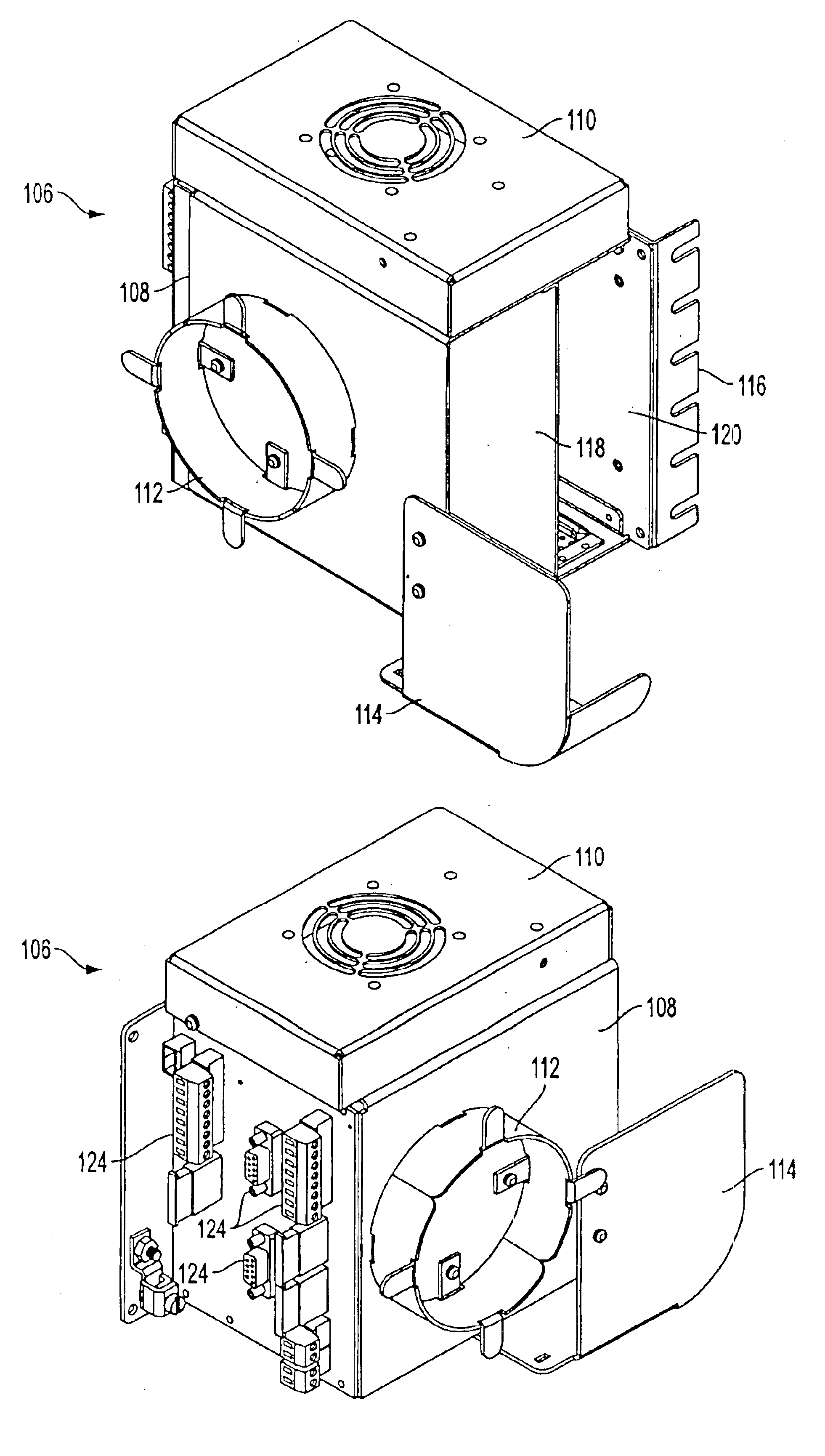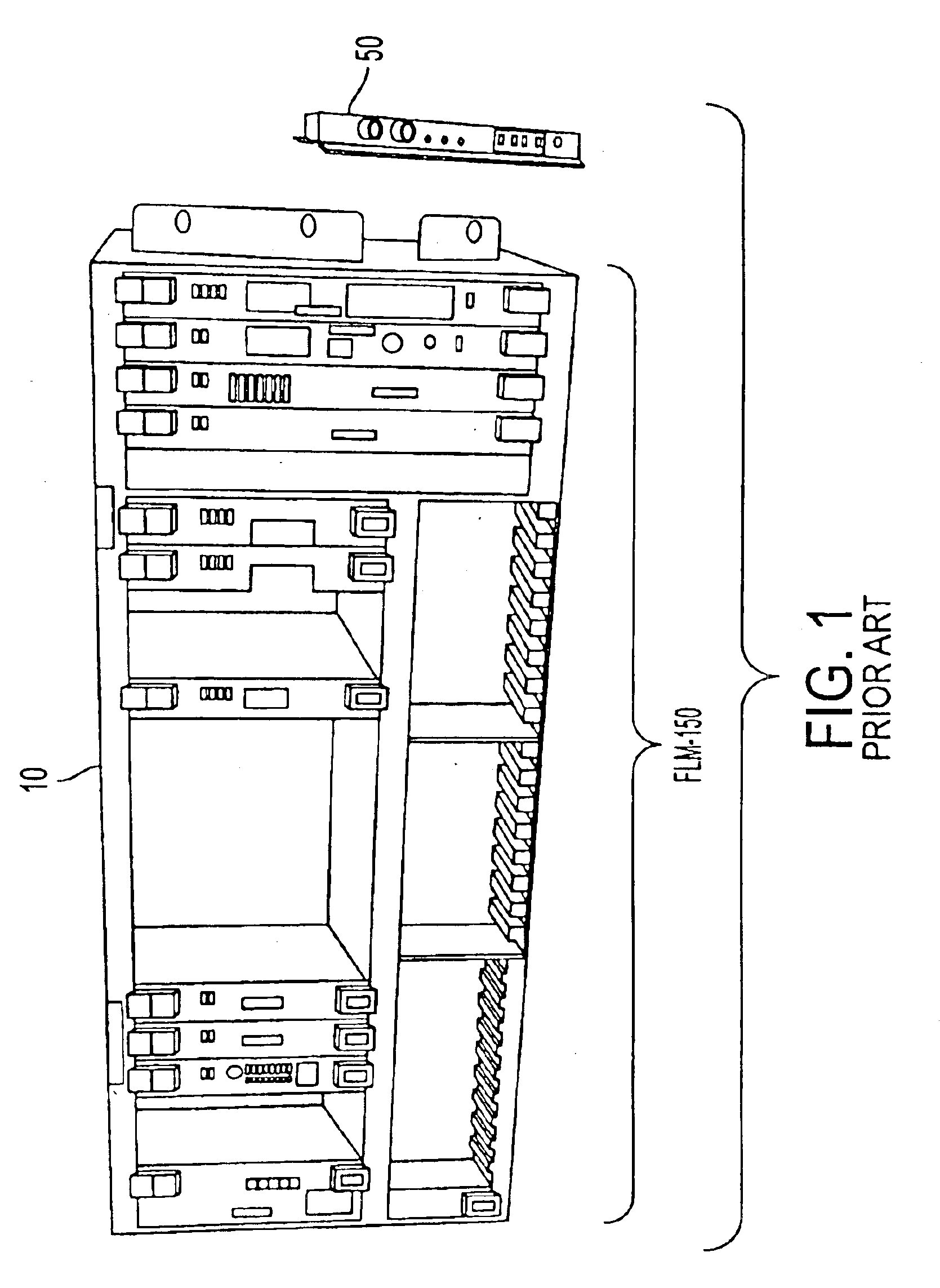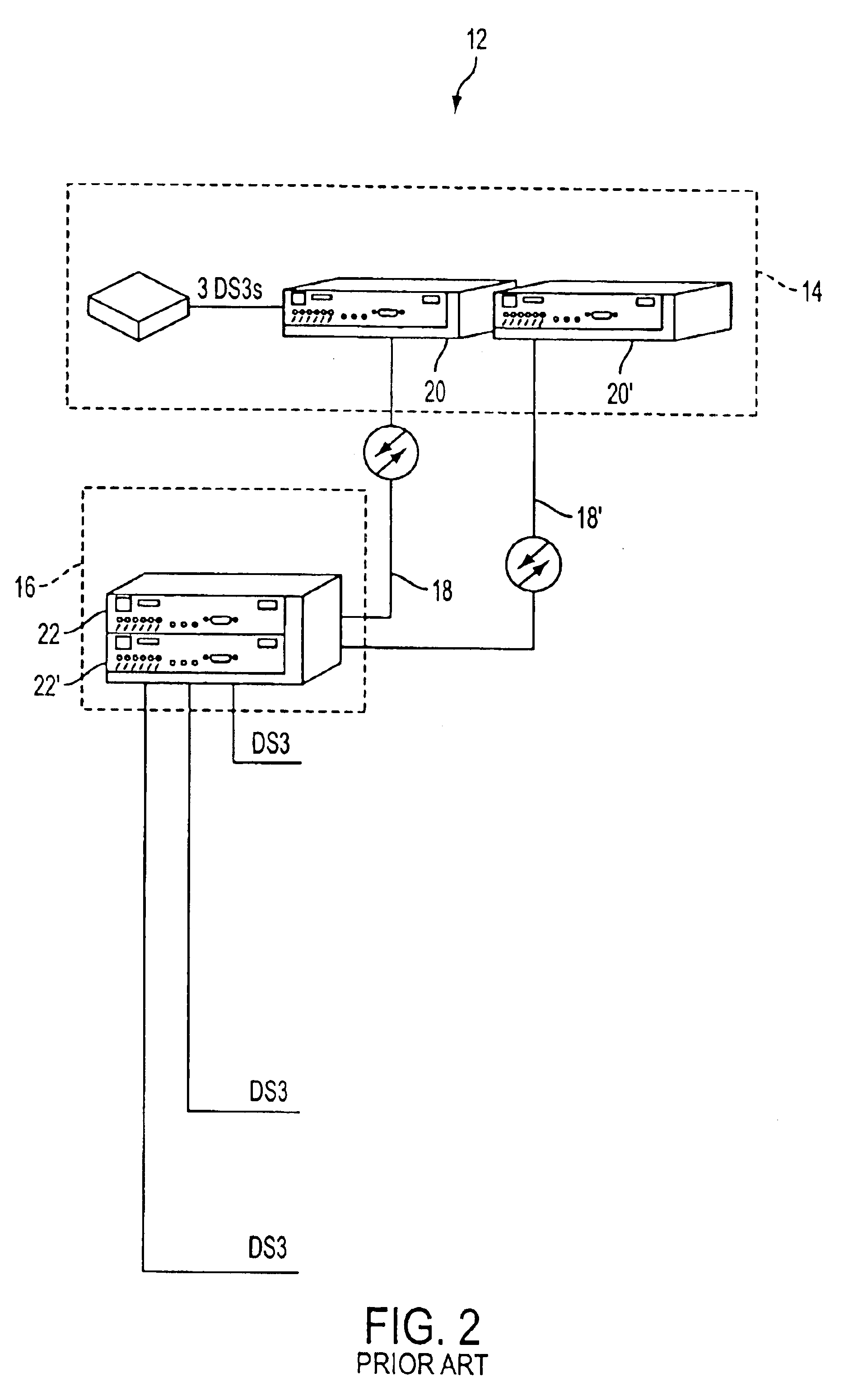SONET multiplexer having front panel access to electrical and optical connectors and method for using same
a sonet multiplexer and front panel technology, applied in the direction of optics, fibre mechanical structures, instruments, etc., can solve the problems of reducing the flexibility of the shelf, and so as to reduce the size of the enclosure, the effect of reducing the size of the sonet multiplexer
- Summary
- Abstract
- Description
- Claims
- Application Information
AI Technical Summary
Benefits of technology
Problems solved by technology
Method used
Image
Examples
Embodiment Construction
FIG. 3 is a perspective view of a reduced-size assembly 100 for mounting SONET and other multiplexing equipment to achieve DS3 and other multiplexing capabilities according an embodiment of the present invention. As described in more detail below, the assembly 100 is capable of receiving different combinations of modules, such as, but not limited to, O3-3D3, O3-3D3P, DS3 Express, D3-14D1, D3-28D1, and WDM modules, depending on the type of application and the types of interfaces required.
In the example shown in FIG. 3, a O3-3D3 module 102 and a D3-28D1 module 104 are removably installed in the assembly 100. As shown in FIG. 4, the assembly 100 includes an enclosure assembly 106 that can be made of aluminum, anodized steel or any other suitable material. In this example, the enclosure assembly 106 includes an enclosure 108 on top of which is mounted a fan 110 for cooling the modules inserted in the enclosure 108. The enclosure 108 has a cable fiber management assembly 112 for keeping ...
PUM
 Login to View More
Login to View More Abstract
Description
Claims
Application Information
 Login to View More
Login to View More - R&D
- Intellectual Property
- Life Sciences
- Materials
- Tech Scout
- Unparalleled Data Quality
- Higher Quality Content
- 60% Fewer Hallucinations
Browse by: Latest US Patents, China's latest patents, Technical Efficacy Thesaurus, Application Domain, Technology Topic, Popular Technical Reports.
© 2025 PatSnap. All rights reserved.Legal|Privacy policy|Modern Slavery Act Transparency Statement|Sitemap|About US| Contact US: help@patsnap.com



